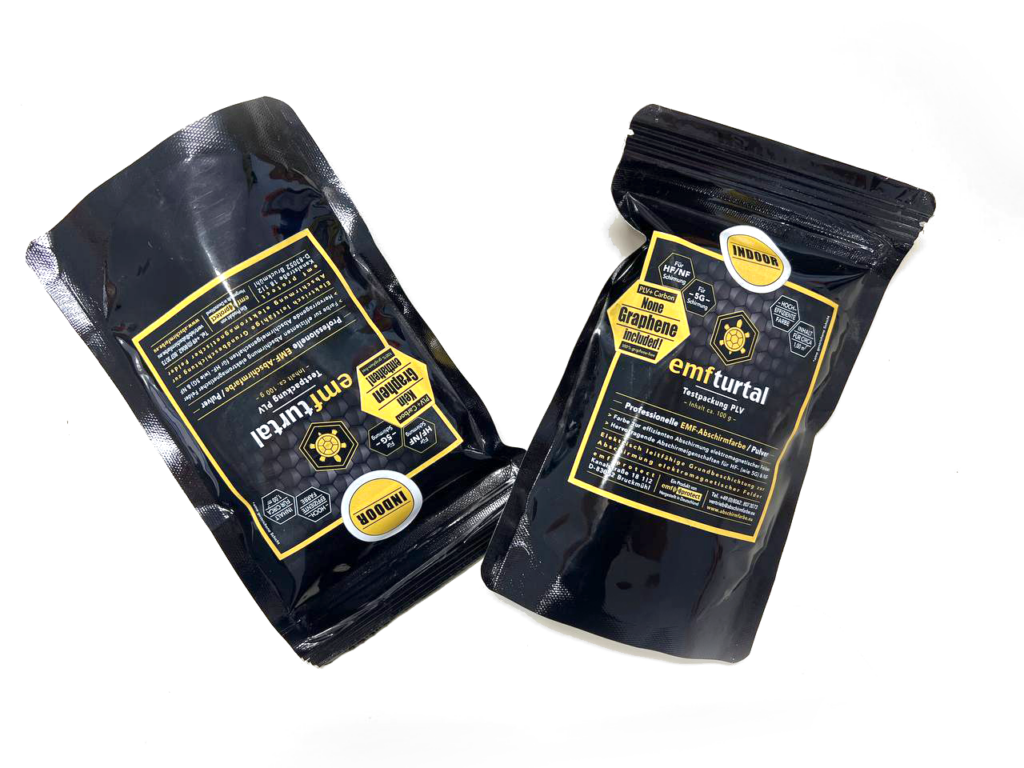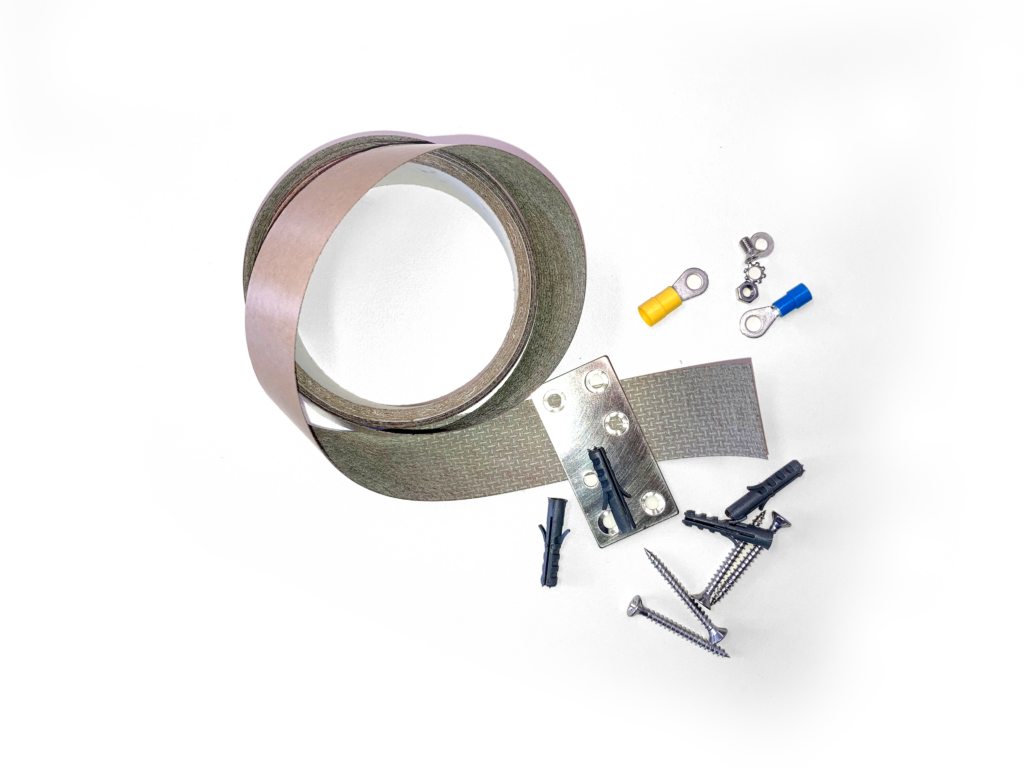
‘EMF turtal’ is a black powder. The instruction for application reads: ‘Mix a 100g test pack with 170ml of water and stir until there are no lumps. After mixing, let it stand for about 10-15 minutes and then stir again briefly. The paint can then be used. Important! Always use a paint roller with a short fleece to apply! Do not use a foam roller! The surface to be painted should always be primed and dust-free!’
Once the paint is ready, there are further instructions for the grounding kit: ‘first, attach the ring tongue to the plate with the help of the fine thread blade, washer and matching nut; then, install the grounding plates with the stainless steel blades and dowels on the grounding tape. The required mounting holes are drilled through the grounding tape.’
The 100g test pack costs 14 Euros. The producer explains that this amount of pulverized shielding paint will suffice for about 1 square metre of indoor wall. In our office, we have about 50 square metres of walls. Protecting yourself against electromagnetic waves (EMF) through shielding paint is expensive! Moreover, one wall has windows in it and would anyway destroy the Faraday cage effect of EMF-shielded walls unless a fine conducting grid layer was applied onto the front of the glass.
During our research, we have met people who feel negatively affected by electromagnetic fields and waves emanating from wireless devices and mobile communication antennas around their homes. Some are so electrohypersensitive that they leave their homes and move to ‘White Zones,’ that is places without ‘‘electrosmog’. But sometimes, they only find ‘Grey Zones’ – spaces with some electromagnetic radiation – and feel they need to shield their homes from the inside. There is a demand for expertise. Electrohypersensitive people who have already shielded their houses share their knowledge about EMF paint and other shielding techniques in workshops and books. This expertise is also part of what is known as Baubiologie in German.
We have also learned that the city council of a medium-size town in the south of Germany considered painting one room in their public library with shielding paint to accommodate electrohypersensitive people. This decision is remarkable as it is not backed by scientific evidence but responds to political pressure from affected individuals who live in that town and have campaigned for their cause for decades. Official risk assessments do not confirm that electromagnetic waves from mobile communication infrastructure have negative health effects. Therefore, governments usually do not step in for those who want to protect themselves. Painting walls with ‘EMF turtal’ is hence a private enterprise at one’s own cost that not only shields the paint user from waves but may also have socially isolating effects.
Sociologist Andrew Szasz has coined the notion of ‘inverted quarantine’ to describe people that change their lifestyles – in his case by purchasing healthy organic products – to protect themselves against environmental stressors. It seems that this EMF shielding paint is yet another tool for inverting quarantine – so is the discharging device that is used for ‘clearing’ people from electromagnetic charges before they enter a shielded home. (You may be familiar with this practice if you have watched the series ‘Better Call Saul’). Whoever enters an EMF-shielded home should be prepared to leave their mobile phone behind. Otherwise, the expensive paint prevents the mobile phone radiation from leaving the building and, again, inverting the dwellers’ self-chosen, inverted quarantine into an electrosmog chamber.

Szasz, A. (2007). Shopping our way to safety: How we changed from protecting the environment to protecting ourselves. University of Minnesota Press.